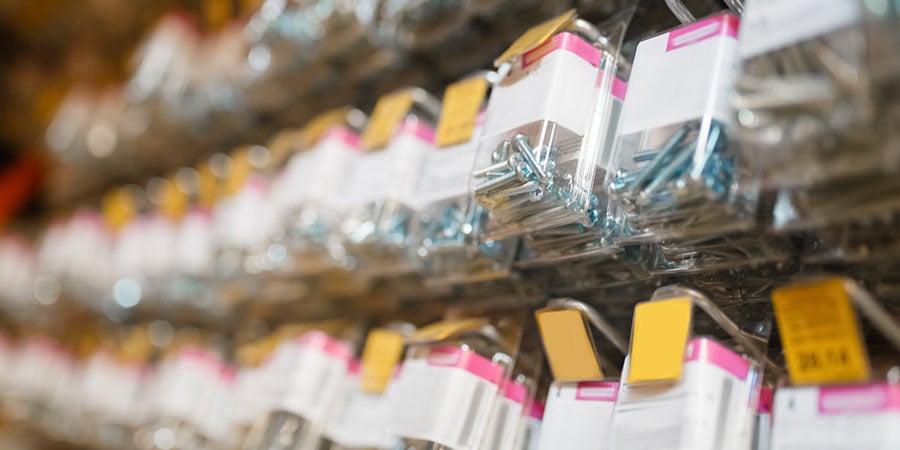
A step back from our usual topic of labeling, this post examines growth opportunities related to packaging.
Packaging is an important subject for any business that produces a physical product, affecting efficiency, costs, and sales. It should be a central focus whenever you are coming up with a new product to manufacture and sell.
As regular readers of the Pack Leader USA blog know, we are primarily a supplier of filling, capping, and labeling equipment. In this post, we'll take a step back from our usual topic of labeling to examine why packaging is highly relevant in the supply chain and see where there may be some opportunities for improving your operation.
On the most basic level, packaging is supposed to:
- Protect the product.
- Contribute to manufacturing efficiency.
- Make shipping go smoothly.
- Make it simpler to stock shelves.
- Help sell the product to the consumer.
Let’s look a little more closely at each.
1. Protect the product.
Protection of the product is a basic function of packaging to meet the needs of both producers and consumers. Decisions about packaging (e.g., glass vs. plastic bottle or designing the secondary packaging to contain them) affect how the product is protected physically, whether from shock and vibration, ultraviolet radiation, temperature, or simply exposure to outside air. Packaging also must keep the contents clean, fresh, and sterile by providing a barrier to oxygen, water vapor, dust, and pollutants.
A product must be protected not only during manufacturing but at all subsequent phases, such as storage and picking at the warehouse, transportation, stocking, and shelving. In all these phases, outer packaging should clearly identify the contents as well as providing a measure of security.
Once the product is on the shelf, tamper-evident packaging can provide assurance to the consumer that the product has not been opened since it was packaged by the manufacturer.
2. Contribute to manufacturing and shipping efficiency.
To discuss packaging intelligently, it is necessary to understand that it consists of primary, secondary, and tertiary layers.
The primary package is the smallest unit, serving as the container for the product, and is directly handled by the consumer. The secondary package is used to group the primary packages together, while the tertiary package is used for warehousing and shipping.
How well the three fit together is a significant logistics issue for the manufacturer, who must handle, store, pick, and transport the product. The goal is to streamline all these tasks while minimizing loss from damage and theft.

But the need to balance opposing forces means there are compromises. For example, a package too large for the product may not protect it as well as a tight-fitting one and would likely increase shipping costs due to dimensional pricing by shippers. On the other hand, standardizing on fewer package sizes helps lower costs, and simplifies operations.
Another tradeoff example is lighter versus heavier packaging. In general, there's more product breakage with lighter, less expensive, less robust packaging. But stronger packaging not only costs more but also adds weight, increasing shipping costs.
3. Help sell the product to the consumer.
A widely recognized function of packaging — beyond its protecting and preserving the product and allowing it to be handled, transported, and stored — is to get the consumer to notice, buy, and feel good about your product.
Product package design is an important element in the development of brand identity. In some cases, that identity is conveyed by secondary packaging meant to go straight onto the store shelf, more effectively displaying primary packages and magnifying the eye-catching effect of a colorful, distinctive design. That's called shelf-ready packaging (SRP), and we’ll talk more about it in the next section.
The design, layout, typography, and concepts conveyed by on-shelf packaging have evolved into a mature communication discipline. Their function is to get the buyer's attention, convince the buyer to reach out and take the product from the shelf, and provide reassurance of quality once the product is in hand.
Further, brand identity creates a consistent impression across product lines, helping consumers recognize and respond to other products from your company.
4. Make it simpler to stock shelves.
Ok, back to the SRP (shelf-ready packaging) we mentioned earlier. You'll recall that SRP is secondary packaging, designed to hold the primary packages. The difference from conventional packaging with SRP is that the secondary package is meant to go straight to the store shelf and be part of the display.
One benefit of SRP is that it's designed to be easy to open, unlike traditional retail packaging that often requires a utility knife, which can damage the product. Some SRP has perforation that makes it easy to tear open boxes, or a two-part tray and lid system. Once open, it goes straight to the shelf, and setup is done.
SRP also saves in-store labor hours in these ways:
- Improved code rotation and checking.
- More accurate stock counting.
- Faster identification of products in the back of the store.
Finally, well-designed SRP uses less material than traditional packaging and therefore is easier to recycle, which not only reduces costs but aligns with sustainability initiatives to reduce waste.
At Pack Leader USA, we occupy a small corner of the packaging universe, helping businesses improve labeling with a variety of automated and semi-automated labeling, filling, and capping machines. Many of the broader principles of packaging design apply when you're selecting container shapes, sizes, and colors, and designing labels.
For help with the myriad decisions you'll face, set up a free labeling consultation with us. We're here to help!















